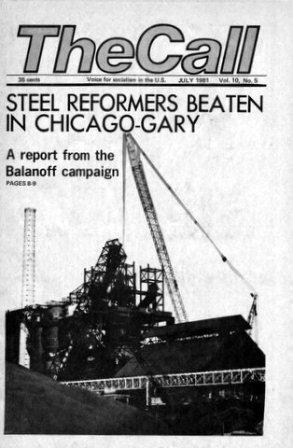
First Published: The Call, Vol. 10, No. 5, July 1981.
Transcription, Editing and Markup: Paul Saba
Copyright: This work is in the Public Domain under the Creative Commons Common Deed. You can freely copy, distribute and display this work; as well as make derivative and commercial works. Please credit the Encyclopedia of Anti-Revisionism On-Line as your source, include the url to this work, and note any of the transcribers, editors & proofreaders above.
The long-awaited second congress of the CPML was held in late May. The meeting was successful in choosing a new leadership, adopting some working papers like the one on work within Black united fronts and affirming a general commitment and approach toward Marxist-Leninist unity.
There were no splits or mass defections at the congress. But the internal debate within the CPML is sharp and is still unresolved.
The Call had hoped to carry a more in-depth report on the results of the Second congress in this issue, but that will not be possible until after the new Central Committee is able to meet and hammer out a summation.
The commitment by the new leadership to gather the opinions and experience of the party membership in order to struggle out a line on many of the complex questions is a good thing. A wide range of views exists on how to develop a line, organization and program best suited to building a revolutionary movement in the U.S.
We hope that this issue of The Call provides some useful articles for those grappling with the road forward. Our interview with Vaskar Nandy while dealing with a country with radically different conditions (like a countryside seething with peasant struggles) was enlightening to those of us who worked on it because he elaborated on his party’s fairly successful M-L unity efforts. Also we hope that the analysis of DSOC written by a comrade from the Revolutionary Workers Headquarters will provide food for thought on general questions of organization and orientation. The report from the Detroit conference of Black Marxist-Leninists adds more information on the process of achieving M-L unity, especially as it relates to the national question, which historically has been an Achilles heel of left unity.
Another article that we hope contributes to the process of M-L unity is the contribution from the Proletarian Unity League on their work in the struggle against Proposition 2 1/2 in Boston. Analysis of mass movements by our organizations adds the critical element of practice to the ongoing debate. We hope that the reports on the recent steelworkers election struggle also provide insights into the particularities of line development.
The Call is not the best vehicle for carrying out the internal struggle. Discussion and the circulation of positions, proposals and summations of work are necessary for the unity process. We can popularize the positions and programs which the CPML is united around as well as provide supplementary political, educational and agitational material and opinions.
We intend to strengthen our analysis of the key battle fronts as the organization unifies around its road ahead.